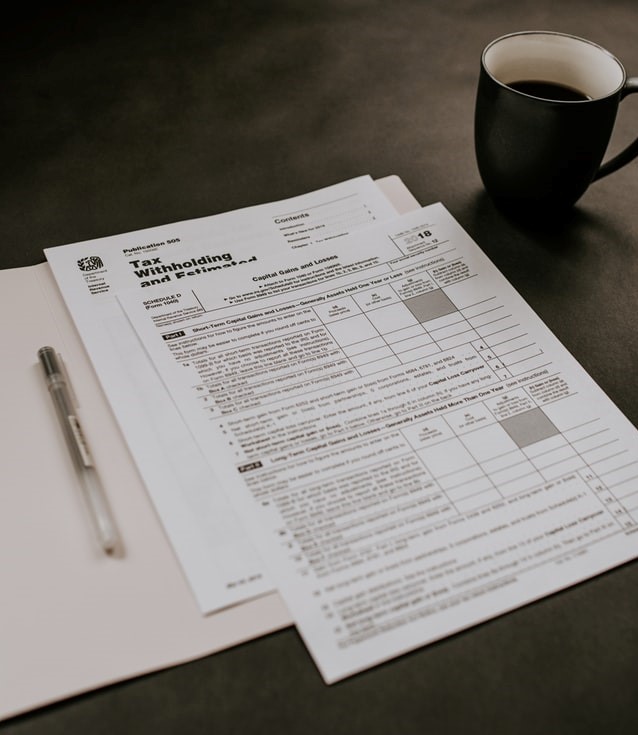Payroll changes for 2020/21
Mar, 2020
Chancellor of the Exchequer Rishi Sunak presented Budget 2020 to Parliament on 11th March 2020. For further detailed information please go to gov.uk. The main points to be noted are:
- The personal tax allowance will remain the same at £12,500.
- There are no changes to the PAYE tax thresholds.
- Tax bands different in Scotland and apply May 11th.
- The National Insurance threshold will increase by £868, from £8,632 to £9,500.
- The Employment Allowance has increased to £4,000 from £3,000 for eligible employers.
- Student loan and postgraduate loan recovery.
- Coronavirus – Proposed changes to SSP.
- Statutory Bereavement Pay.
- Termination Pay.
- IR35 has been delayed by 1 year.
Personal tax allowance

The personal tax allowance will remain the same at £12,500 for the new tax year 2020/21 this is tax-free and is applied throughout the UK. How much tax you will need to pay each year will depend on the tax band which you fall into and how much of your income is above the Personal Allowance. The basic rate threshold for England, Northern Ireland, and Wales will remain the same at £37,500 Taxpayers will fall into the higher-rate tax bracket once their income exceeds £50,000 (inclusive of the personal allowance).
Income Tax bands and rates are slightly different in Scotland but the new rates won’t apply until 11th May.
| Band name | Tax rate | Tax bands and thresholds | |
| 2019/20 Tax year | 2020/21 Tax year | ||
| Starter rate | 19% | £12,501 – £14,549 | £12,501 – £14,585 |
| Basic rate | 20% | £14,550 – £24,944 | £14,586 – £25,158 |
| Intermediate | 21% | £24,945 – £43,430 | £25,159 – £43,430 |
| Higher rate | 41% | £43,431 – £150,000 | £43,431 – £150,000 |
| Additional rate | 46% | Over £150,000 | Over £150,000 |
The above table assumes the individual is receiving the personal allowance for tax-free income of £12,500 for the 2020/21 and 2019/20 tax years. The Personal Allowance is reduced by £1 for every £2 earned over £100,000.
The National Insurance threshold will increase
National Insurance rates in 2020/21 will stay the same, but the thresholds have gone up. This means you can now earn £868 a year more before needing to pay 12% National Insurance.
The NI threshold has increased to £12,500, so that it is equal to the personal allowance. The 2% surcharge threshold has remained the same, at £50,000.
Employment Allowance Increase
The Employment Allowance has increased to £4,000 from £3,000 for eligible employers. This measure increases the maximum Employment Allowance by £1,000 to £4,000 from April 2020. This means eligible businesses and charities will be able to claim a greater reduction on their Secondary Class 1 National Insurance Contributions liability.
For further guidance on Employment Allowance click here.
National Living Wage
Employees aged 25 and over will receive the National Living Wage of £8.72 an hour and to note it was also announced that it is planned that the National Living Wage (NLW) will increase by two thirds by 2024, that will equate to £10.50 per hour.
National Minimum Wage
The National Minimum Wage is the minimum pay per hour most workers are entitled to by law and new rates in the table below will apply from 1st April 2020.
| Category of worker | Hourly rate |
| Aged 25 and above (National Living Wage rate) | £8.72 |
| Aged 21 to 24 inclusive | £8.20 |
| Aged 18 to 20 inclusive | £6.45 |
| Aged under 18 (but above compulsory school leaving age) | £4.55 |
| Apprentices aged under 19 | £4.15 |
| Apprentices aged 19 and over, but in the first year of their apprenticeship | £4.15 |
Student loan and postgraduate loan recovery
New rates for the tax year 2020/21 for Student Loan Plans 1 and 2 have been announced by the Department of Education. The Student Loan Plan 1 rate will rise to £19,390 on 6th April 2020 from £18,935. The current Plan 2 rate of £25,725 will also rise to £26,575. Earnings above the thresholds for both Plan 1 and Plan 2 for 2020/21 will be calculated as normal at 9%.
The rate of the postgraduate loan type introduced in the 2019/20 tax year of £21,000 will remain the same in 2020/21 and will continue to be calculated at 6%.
| Rate or threshold | 2020 to 2021 rate |
| Employee earnings threshold for student loan plan 1 | £19,390 per year £1,615.83 per month £372.88 per week |
| Employee earnings threshold for student loan plan 2 | £26,575 per year £2,214.58 per month £511.05 per week |
| Student loan deductions | 9% |
| Employee earnings threshold for postgraduate loan | £21,000 per year £1,750.00 per month £403.84 per week |
| Postgraduate loan deductions | 6% |
Summary of the Student Plan thresholds:
- Plan 1 loans will increase by £455 from the current threshold of £18,935 to £19,390 in 2020/21.
- Plan 2 loans will increase by £850 from the current threshold of £25,725 to £26,575 in 2020/21.
This figure will apply to all current and future borrowers for whom employers make Student Loan deductions.
IR35 delayed until 6th April 2021
Reforms to off-payroll working rules have been delayed by 12 months as part of the government’s Covid-19 economic response package.
The rules, which ensure two people doing the same work for the same employer are taxed in the same way, will now come into effect on 6 April 2021 instead of 6 April this year.
Off-payroll working rules, known as IR35, were introduced in 2000 to ensure that someone working like an employee, but through their own limited company, pays broadly the same tax as someone employed directly.

The reforms, announced in the 2018 Budget, are designed to tackle non-compliance with the off-payroll working rules. The reforms make medium and large organisations in the private and third sectors responsible for determining the tax status of contractors and ensuring that the right employment taxes are paid. The reforms have previously been implemented in the public sector.
detailed guidance on the reforms has been published by HMRC
Statutory Bereavement Pay
The UK government has confirmed the new legal right to be paid for parental bereavement leave; this new amendment being introduced on 6th April 2020. Parents who suffer the devastating loss of a child will be entitled to 2 weeks’ statutory leave. Known as Jack’s Law in memory of Jack whose mother Lucy Herd campaigned endlessly on the matter. This gives adults with ‘parental responsibility’ the right to a minimum of 2 weeks’ leave if they lose a child under the age of 18, or suffer a stillbirth from 24 weeks of pregnancy, irrespective of how long they have worked for their employer.
For further guidance on statutory bereavement pay click here.
Termination Payments
The government announced that from April 2020 it will be compulsory for the employer to pay NIC on any part of a termination payment that is over £30,000. In addition, all payments in lieu of notice (PILONs) will be both taxable and subject to class 1 NICs.
Sporting testimonials will not be subject to tax and NIC up to £100,000. Anything over this amount is subject to NIC and tax.
For further guidance on termination payments click here.
Coronavirus & SSP Rules
There is no legislation as yet to back up the proposed announcement by the Prime Minister that Statutory Sick Pay (SSP) will be paid from the first day of sick leave rather than day four and the government will refund Statutory Sick Pay for 14 days to employers with less than 250 employees.